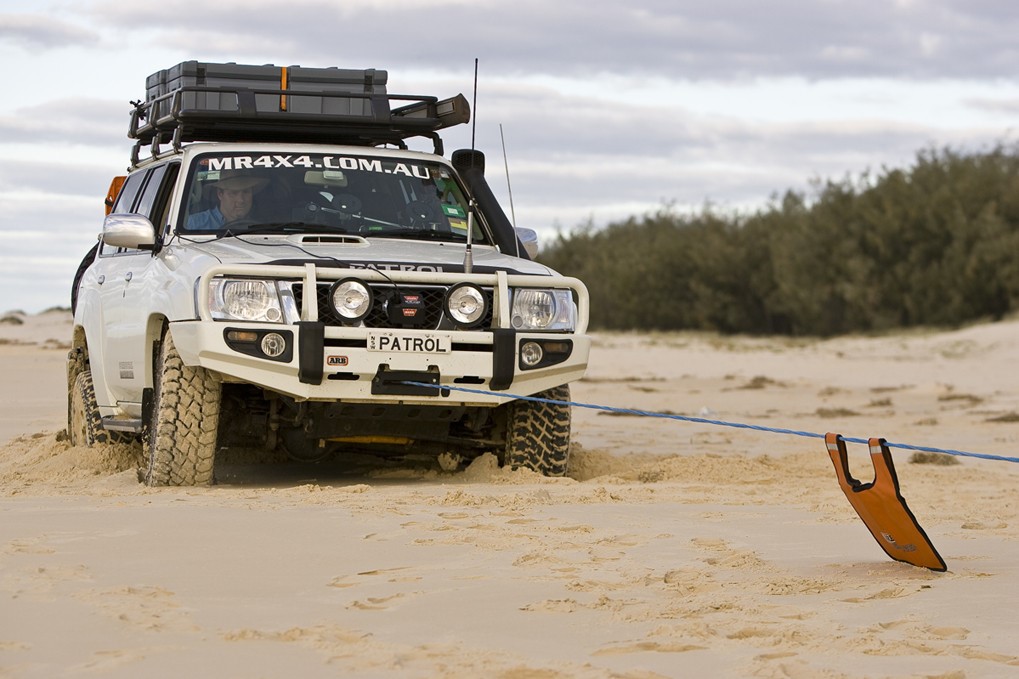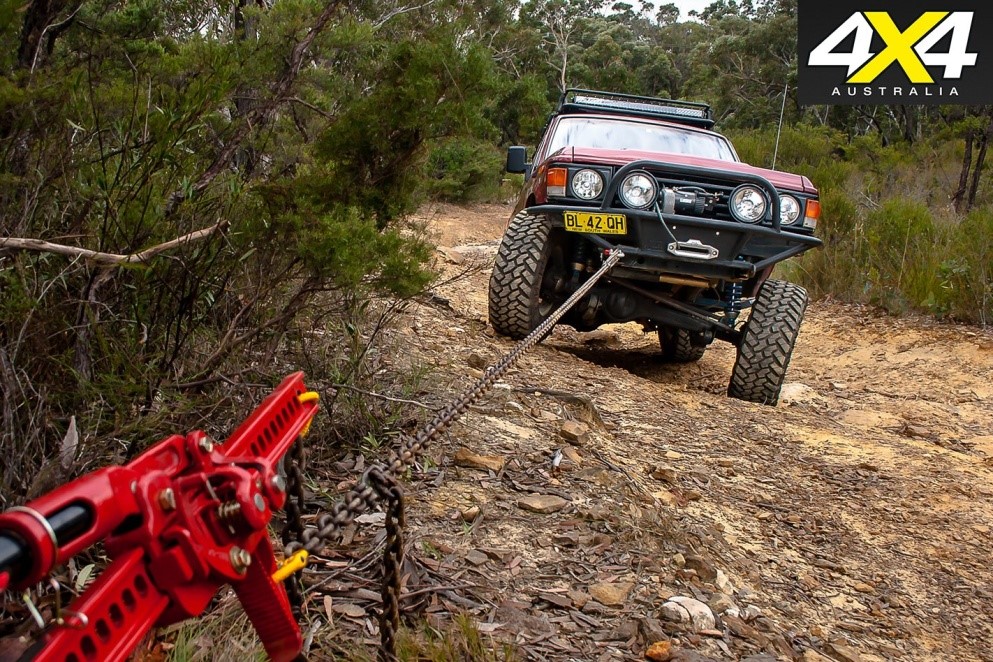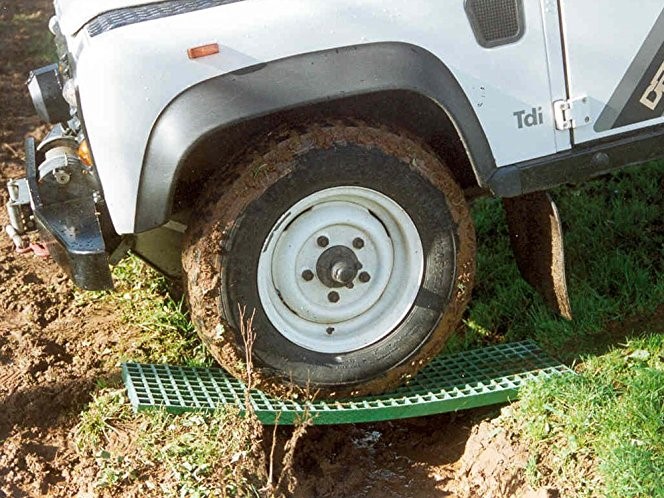If you’re new to the world of 4×4 and off-road vehicles, here’s a great summary on vehicle recovery.
This blog post outlines the main types of recovery gear available and a very basic introduction on how to use them and when to use them. Hopefully after reading this; you’ll be able to decide what sort of recovery gear you need for your off-road adventures.
Tow Ropes
Towing, this is the most basic kind of recovery (and the bare minimum kit you should carry in your vehicle when going out on an expedition). Make sure your tow rope is rated to at least double the weight of your vehicle. And ensure you have strong recovery points (and ideally 4.75T bow shackles on each side to connect the rope to your recovery points). Once you have all your gear; make sure it fits with each other and with your vehicle’s recovery points (it may seem obvious, but I have seen it dozens of times-shackles that don’t fit on the rope or into the recovery point). Here are a couple of basic tips when towing:
- Tow balls are NOT built for recovery, they are for towing trailers (normal towing loads). They are likely to break off and injure someone if stressed too much. Not worth the risk.
- DO NOT JERK the rope-this can break your recovery points, the rope, the shackles and even stress the frame/body of your vehicle. Tow ropes are not made for sudden jerks. You need to tension the rope slowly before pulling on it.
- Do not tie a knot in a tow rope, it creates a weak point that is likely to fail under heavy load.
Winches
Winching, is extremely effective and the best form of self-recovery. There are a variety of different winches; electric, hydraulic and mechanical. Electric winches are the most common, but they have an inherent problem with overheating the motor (especially the cheaper ones) and they use quite a lot of electrical power.
They can be used to self-recover, and also to recover another vehicle. Here are a couple of quick tips to note when winching:
- Ensure you find a good anchor point (big trees are usually the best, but rocks can work sometimes too, and at times you just have to make your own anchor).
- Make sure you winch slowly, for a number of safety reasons, but also to ensure you don’t strain the winch motor or any of the other recovery gear.
- Keep your engine running while winching (to ensure the alternator keeps charging the battery)
- Use a tree strap (don’t wind your winch cable directly round a tree)
- Keep everyone away from the winch line. With steel winch cables use a winch blanket, (or similar) if these cables snap they can be very dangerous and easily kill someone/dent cars/break windscreens. The blanket gives the cable some air resistance, which massively slows it down when it snaps.

Kinetic Rope / Snatch Strap
This is arguably the most effective recovery. However, it is quite dangerous and should only be done with PROPER recovery points. And NEVER using a Tow ball!
A kinetic rope is like a rubber band. The rope stretches up to 130% of its starting length before snapping back to its original size (whilst the rope compresses, after stretching; it transfers the energy from the recovery vehicle to the stuck vehicle). The reason kinetic rope recovery is so effective is because it allows you to build up some momentum and therefore energy before transferring it to the stuck vehicle (without straining the recovery points).
When choosing a snatch strap, it is recommended to select something with a maximum breaking strength (MBS) of two to three times your Gross Vehicle Mass (GVM) http://arbusa/GettingStarted/Recovery-Techniques-Equipment.aspx
Tow Rope VS Snatch Strap
Hi Lift Jack
Hi Lift Jacks are something you see on a lot of 4×4’s. They look really cool. But not many people know how to use them. I’d definitely recommend you watch a couple of videos on how to operate a hi-lift jack before you try. They can be very dangerous if not used properly (speaking from personal experiences). They are not ideal for changing tyres because they aren’t quite stable and can slip fairly easily. The recommended way to use them for changing a tyre is to jack up the vehicle, place stands (or rocks) under it and then lower the vehicle onto the stands before changing the tyre (the stands or rocks are much more stable). Personally I’d recommend you stick to the bottle jack for changing tyres-it’s much safer.
What many people don’t actually realise is that Hi-Lift Jacks are actually intended for Off-road recovery:
- If you beach yourself on some rocks (or in mud/sand)-you can use the jack to lift up the body of the vehicle then move the rocks (or mud/ sand); or alternatively keep lifting till the tyre comes off the ground-then place some rocks under the tyre. When using the Hi Lift in mud or sand you may need the wide base to stop the jack sinking into the ground.
- Hi lift winching – is essentially like operating a manual winch (a little more cumbersome, but it works); hook up a rope to an anchor point and the other end to the top clamp of the Hi-Lift. Then a different rope from the stuck vehicle to the nose of the Hi Lift (the part that moves up and down). Then start operating the jack in lifting mode.
Contrary to the norm Hi Lift jacks should preferably be stored indoors or if stored outside the vehicle they should be inside a protective case. The reason for this is that dust and water can cause the working mechanism to seize during operation.

Shovels
They are surprisingly useful to dig yourself out of sand, mud and even rocks. Also when your wheels are spinning, you can dig out the soft stuff under your wheels and replace it with rocks, branches or any alternative. You can even use them to help change your tyre (put some rocks under your axle, then dig under the tyre you want to change). Shovels are especially useful for getting out of ruts in mud.
Ladders
There are many different types available: sand ladders, waffle boards, max trax. They can be very handy to give you traction in sand and mud, but also useful to get over obstacles and even for bridging over ditches/holes. Not all the ladders will be able to hold the weight of your vehicle; so you need to check the specs before attempting to use them for bridging. There are also specific ladders for bridging-but those are for extreme off-roading, and they aren’t very useful in mud or sand.



9 thoughts on “Basic Introduction to Off-Road Recovery”
Thank you for explaining how Hi-Lift jacks work in off-road recovery. My brother likes to off-road and I’m always worried he’ll get stuck. He’ll have to make sure one of his friends or family members has the necessary tools to recover his vehicle if necessary.
I’ve included this article to my bookmarks
Located this article interested, added to delicious
Glad to be of service
Many thanks conveying this particular write-up and making it public
Glad you liked it. You’re most welcome!
Hi there Wow, that’s what I was looking for, what a information! present here at this website, thanks admin of this site. many thanks
Like!! I blog frequently and I really thank you for your content. The article has truly peaked my interest.
Hi there, after reading this awesome piece of writing i
am too happy to share my know-how here with colleagues.
Comments are closed.